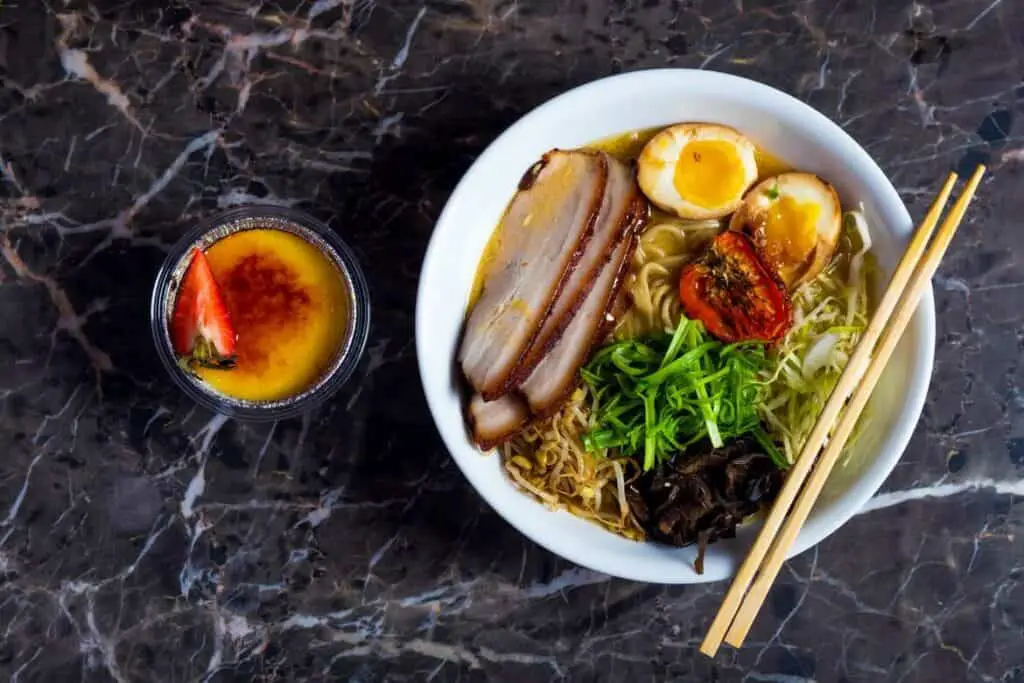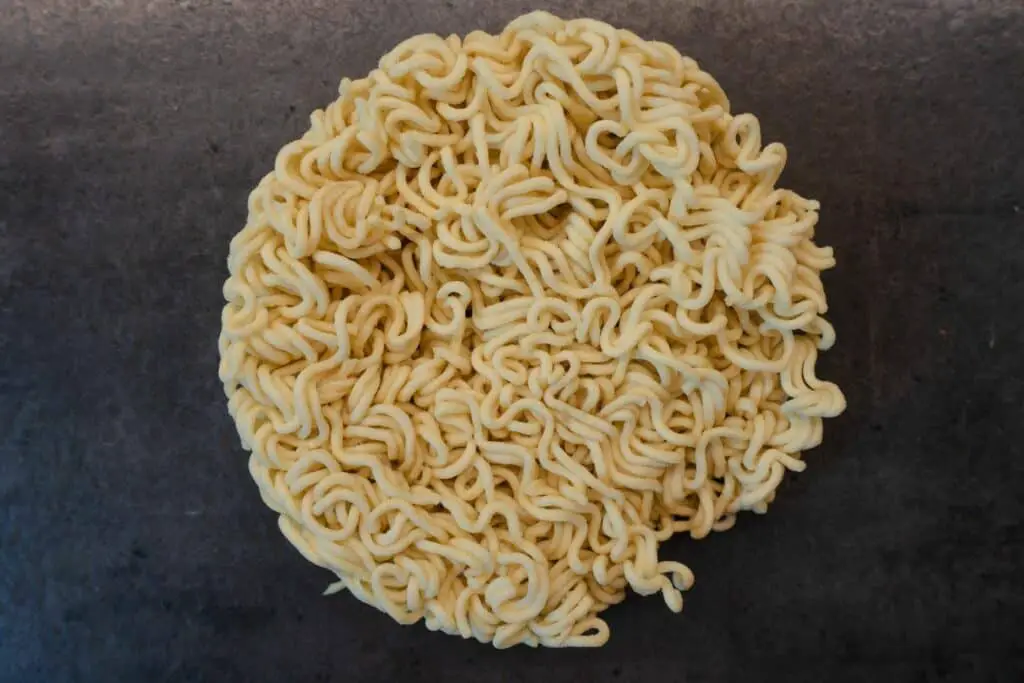Instant noodles are known and eaten globally and are often featured in pop culture. What these noodles aren’t, however, is ramen. Ramen carries more tradition and nutrition and has a lot of value for Japanese people. Let’s look at the ramen vs. noodles debate and discuss their differences and similarities.
So what is the difference between ramen and noodles?
The main difference between ramen and noodles is that ramen is a dish composed of various ingredients, while noodles are just one of those ingredients. Ramen is made with wheat-based noodles that are usually alkaline, while instant noodles are almost always made with non-wheat flour such as tapioca or rice.


If you weren’t aware of the difference between these two dishes, keep reading. You may be inspired to visit a Japanese restaurant and eat some of the best noodles of your life.
Ramen vs Noodles: What’s the Difference?
It might be better to ask what the similarities between ramen and noodles are. The apparent one is that they’re both a kind of noodle, but everything else is more or less completely different. So, what exactly sets them apart?
Instant noodles were created out of necessity. They’re convenient for anyone in a rush or on a budget, but none of the ingredients in the instant noodle packaging are fresh.
Ramen are fresh, hand-pulled wheat noodles that get cooked in a broth. The broth can be based on miso, shoyu, and animal stock. Next to the broth, ramen goes well with different types of meat, mushrooms, tofu, and fresh and pickled vegetables.
If you’re creative enough, you can add fresh veggies to your instant noodles, but since they’re typically made out of convenience, not many people have the time for this.
Still, you can find inspiration from various social cooking accounts, especially South Korean creators who have incredible instant noodle varieties.
How Instant Noodles Became a Popular Quick Meal
The invention of instant noodles took the world by storm, but they weren’t created for popularity. Japan was devastated during World War II, especially by food shortages. A man called Momofuku Ando created parboiled noodles through a particular method, after which he’d immerse them in hot oil to dehydrate them.
Dehydrating the noodles made them hard and porous, but they stayed edible for longer periods. This helped people stay nourished in times of crises, as all they had to do was add some boiled water to the noodles and get a nourishing meal out of them.
Ando is considered a national hero in Japan for his invention, but the use and popularity of his invention went beyond saving people from hunger. Nowadays, instant noodles are a staple in many homes across the globe, with some countries coming up with their versions.
For example, there are many instant noodle versions in South Korea. In their TV shows and movies, many characters can be seen eating this quick and savory dish on the go and even at gas stations and Seven-Elevens.
Here is a post about the best instant noodles on Amazon. You may also be interested in some Michelin star instant noodles.
Which is Healthier: Pasta or Ramen?
Ramen is made from the following ingredients:
- Wheat flour,
- Salt,
- Water,
- Special mineral water “Kansui.”
The mineral water gives ramen noodles their special softness and deliciousness. They’re eaten in a broth, which can be healthy, and together, the ingredients make for a hearty, nutrient-packed meal.
Pasta is made from similar ingredients, except mineral water, and with the addition of eggs. Pasta can also have many shapes, from spaghetti to elbow macaroni and fusilli. Pasta is eaten with a thick sauce, and you’d never see it served in any sort of broth.
You can read this post to find out about buckwheat noodles.
Anyone who’s used to the Italian way of cooking noodles might get surprised to see some in broth together with a piece of chicken and a boiled egg, but this is how it’s been prepared in Asia, especially Japan, for centuries.

Is Ramen Better than Instant Noodles?
Now comes the question: is a cup of noodles better than ramen, or vice versa? This mostly depends on who you ask. Ramen may be too much for some people, but those who frequently enjoy instant noodles also love to eat traditional ramen.
As far as nutrition is concerned, ramen packs more calories and can be a heavy meal, but it has a lot more vitamins and minerals. Instant noodles are a smaller dish, but everything in their packaging is instant, meaning they have preservatives and additives that may not be good to consume often.
Ramen and Instant Noodles Nutrition, Side by Side
Here’s a quick rundown of nutritional values in one serving of instant noodles called Cup Noodles and one serving of restaurant-made ramen, which is typically 3 cups.
| Nutrition / Noodle type | Cup Noodle (1 package) | Ramen (1 serving = 3 cups) |
| Calories | 290 | 954 |
| Total Fat | 11g | 35g |
| Cholesterol | / | 227mg |
| Sodium | 1070mg | 2691mg |
| Total Carbohydrates | 42g | 111g |
| Protein | 6g | 48g |
| Calcium | / | 95mg |
| Iron | 3mg | 24mg |
| Potassium | 430mg | 833mg |
| Vitamin A | / | 528mcg |
| Vitamin C | / | 7mcg |
As you can tell, instant noodles have far fewer calories, carbs, and sodium. However, ramen servings can vary according to where you eat them. The most common amount of ramen was considered here, but some meals can be smaller. They rarely serve ramen bowls bigger than this.
Additionally, with ramen, you get 24% of the daily recommended fiber intake, 66% of daily amounts of vitamin A, and 54% of the daily iron maximum.
If You Have the Chance, Try the Classic Japanese Ramen Dish
If you’ve only ever eaten instant noodles so far (or maybe some ramen sushi), it may be time to take a trip to your nearest Japanese restaurant, or open up a food delivery app, and get some traditional Japanese ramen in your belly.
Don’t worry about the caloric intake – you’ll be full for a while and still have the energy to spend those calories throughout the day. Everyone who loves Cup Noodles, Top Ramen, and other instant noodle brands will enjoy a classic ramen meal once in a while. And if you don’t, well, there’ll always be noodles to make at home.